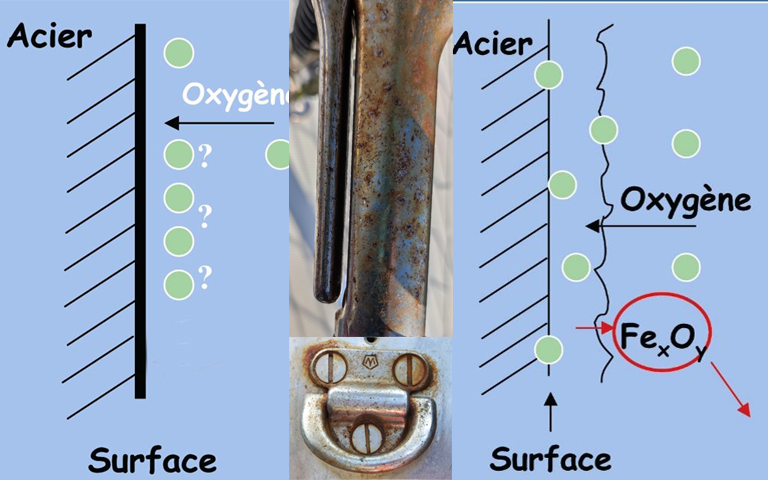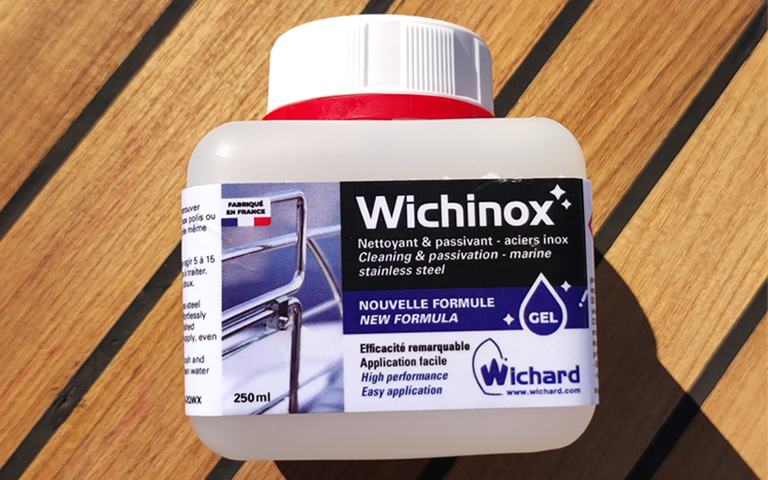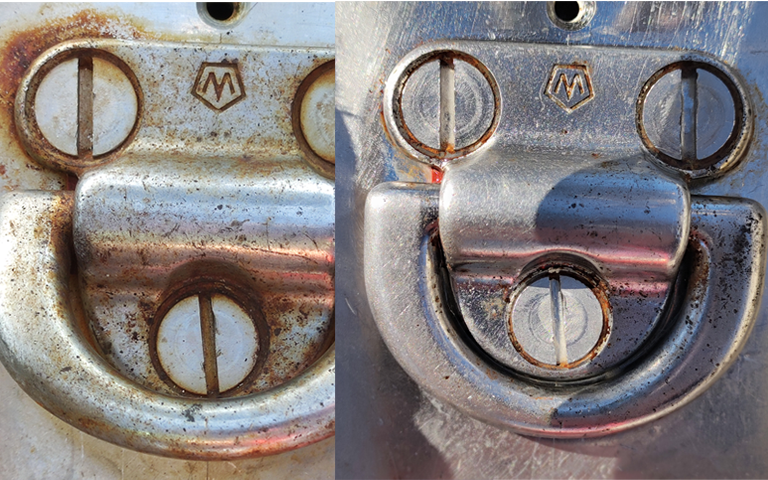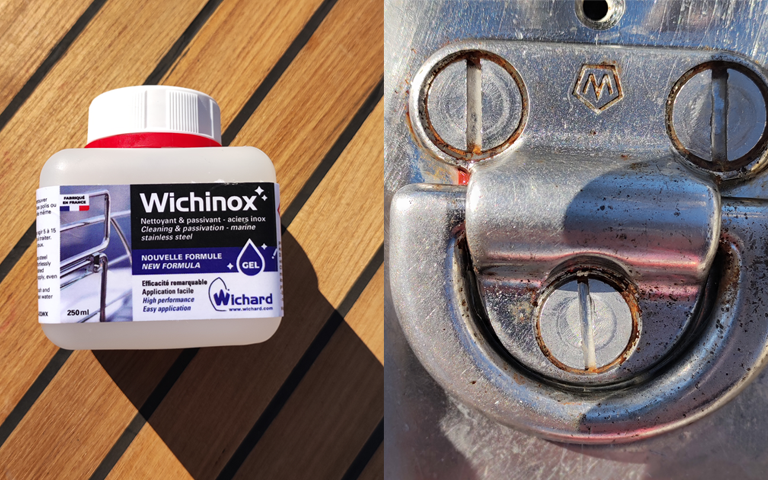The bane of all amateur sailors, corrosion can cause myriad issues on board a boat, from weakening the structure to making individual parts and components more vulnerable to wear and breakage.
Stainless steel and corrosion: What is (pitting) corrosion?
Corrosion: This is an interaction between a metal and its environment. This interaction damages the material.
The sea is an aggressive environment for metals and stainless steels.
Stainless steel is protected by a passivation film, a “passive film” made of chrome. The surface of the metal attracts molecules of a protective material, forming a barrier which is impermeable to oxygen and water. Corrosion occurs when the protective layer (the passive film) breaks and exposes the metal atoms to electrons. This reaction causes pitting.
Corrosion can also vary according to the type of steel. The steels which resist rusting the best are 316L type austenitic steels, unlike martensitic steels such as 17.4 PH or HR.
You should also bear in mind that stainless steel suffers from more corrosion these days due to atmospheric pollution.

How can you prevent corrosion?
There are a few simple things you can do to reduce corrosion:
• When installing a stainless steel part, avoid using tools which are already rusted, or any stainless steel products of which you don't know the origin. Use A4 type screw fixings.
• Don't forget to properly clean your tools before and after using them.
• From time to time, rinse your boat and fittings with fresh water.
• For applications requiring prolonged immersion (such as anchorage), use products made from 316L (no HR stainless steel).
• Apply Wichinox

What is Wichinox ?
This is a passivating gel which will help restore the passive layer on a stainless steel part.
It can be applied with a brush of any type, from large to small to even a toothbrush.
Leave the product for 10 to 15 minutes, depending on the degree of corrosion.
Lastly, rinse your product in clean water and wipe with a soft cloth.
Your equipment will regain its previous shine, and more importantly will be protected once again thanks to a renewed passive film.

You can apply Wichinox before the beginning of the boating season, and after the season when wintering your boat. Between these two periods, all you need to do is rinse your boat with fresh water from time to time.

